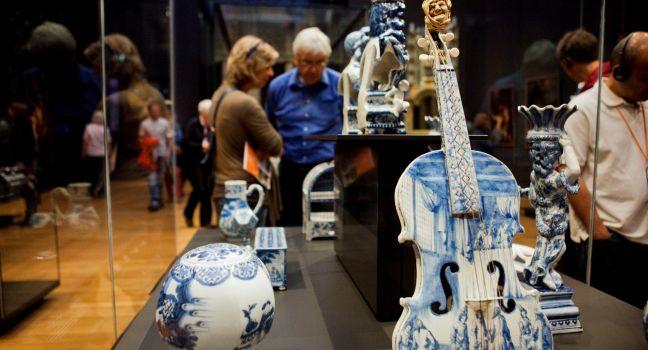Fodor's Expert Review Rijksmuseum

The famed Rijksmuseum houses the largest concentration of Dutch masterworks in the world, as well as paintings, sculpture, and objects from the East and West that provide global context for the history of the Netherlands. Long the nation's pride, this museum has abandoned the art/design/history divisions and has instead combined them into one panoply of art and style presented chronologically, from the Middle Ages to the 20th century. Don't be surprised, in other words, if you spot a vase in a 17th-century painting by Gerard Dou and, next to it, that very same Delft blue-and-white vase itself.
When architect P.J.H. Cuypers came up with a somewhat over-the-top design in the late 1880s, it shocked Calvinist Holland. Cuypers was persuaded to tone down some of what was thought as excessive (i.e., Catholic) elements of his Neo-Renaissance decoration and soaring Neo-Gothic lines. During the building's construction, however, he did manage to sneak some of his ideas back in (including... READ MORE
The famed Rijksmuseum houses the largest concentration of Dutch masterworks in the world, as well as paintings, sculpture, and objects from the East and West that provide global context for the history of the Netherlands. Long the nation's pride, this museum has abandoned the art/design/history divisions and has instead combined them into one panoply of art and style presented chronologically, from the Middle Ages to the 20th century. Don't be surprised, in other words, if you spot a vase in a 17th-century painting by Gerard Dou and, next to it, that very same Delft blue-and-white vase itself.
When architect P.J.H. Cuypers came up with a somewhat over-the-top design in the late 1880s, it shocked Calvinist Holland. Cuypers was persuaded to tone down some of what was thought as excessive (i.e., Catholic) elements of his Neo-Renaissance decoration and soaring Neo-Gothic lines. During the building's construction, however, he did manage to sneak some of his ideas back in (including a cheeky statue of himself peeking around a corner), and the result is a magnificent turreted building that glitters with gold leaf and is textured with sculpture.
If your time is limited, head directly for the Gallery of Honor on the upper floor to admire Rembrandt's The Night Watch with its central figure, Frans Banningh Cocq. His militia buddies each paid 100 guilders to be included alongside him—quite a sum in those days, so a few of them complained about being lost in all those shadows. It should be noted that some of these shadows are formed by the daylight coming in through a small window. Daylight? Indeed, The Night Watch is actually the Day Watch, but it received its name in the 18th century when the varnish had discolored—imagine the conservators' surprise. The rest of this "Best of the Golden Age" hall features other well-known Rembrandt paintings as well as works by Vermeer, Frans Hals, and other great artists of the 17th century.
The 20th-century section on the third floor of the two towers includes works by Mondrian and the CoBrA movement, a Nazi chess set (with tanks and cannon instead of castles and bishops), and even a complete Dutch-designed fighter plane, built in 1917 for the Royal Air Force.
In one wing of the ground floor are the Special Collections—room after room of antique furniture, silverware, and exquisite porcelain, including Delftware. An overlooked (and freely accessible) part of this museum is its sculpture garden formed in the triangle by Hobbemastraat and Jan Luijkenstraat. There's a mini-museum in Schiphol Airport (behind passport control), Holland Boulevard between Piers E and F, which is free and open from 6 am to 8 pm daily.
You get a €1 discount if you buy your ticket online (and you get to skip the sometimes long lines).
READ LESS








